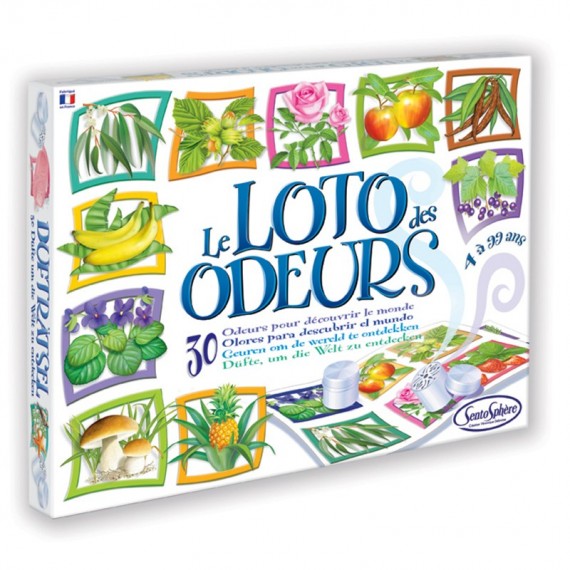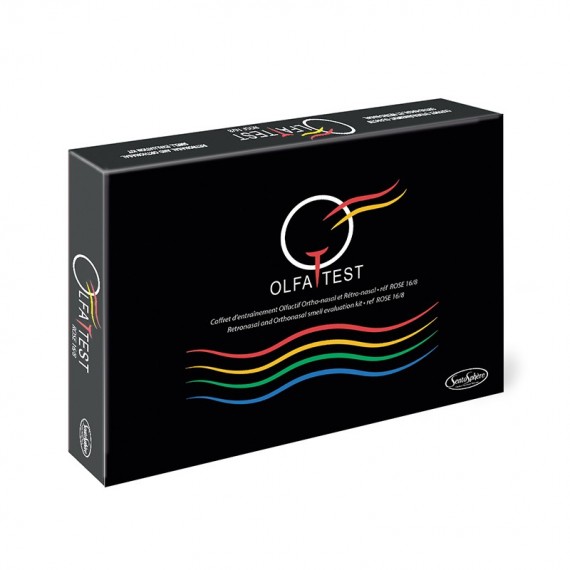The sense of smell plays an essential role in man’s wellbeing.
Tasting a dish or smelling a perfume can provide us with great pleasure. Sometimes it brings back good memories, and it alerts the brain to certain dangers such as gas leaks, fire, or spoiled food. It also plays an essential role in social relations. We thus perceive the importance of smell when it no longer sends messages to the brain, that is to say when suddenly we become anosmic. This is so disturbing that up to 30% of those affected by anosmia become depressed.
Since the beginning of the Sars-Cov-2 pandemic in March 2020, practitioners have noted that one of the symptoms of this viral disease was loss of smell and taste.
Since these anosmias or hyposmias (low recognition and / or confusion of odors) can last several months, many doctors, especially ENTs, recommend performing olfactory rehabilitation. This can improve the recovery of smell by 33%. They are all the more necessary because when people who have had Covid-19 smell again, they do not always perceive odors in the same way as before the disease, which can be very disturbing.

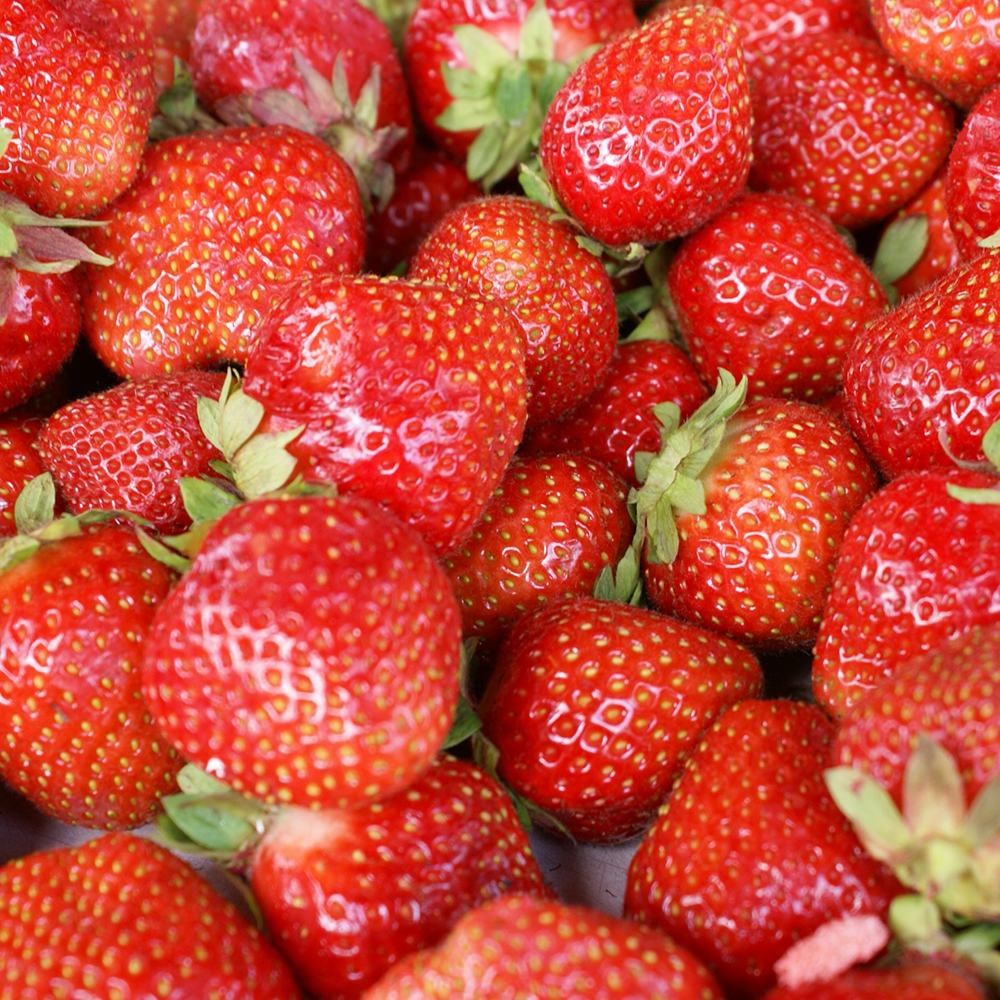



Products adapted for olfactory rehabilitation and recommended by doctors!
The Sentosphere products are perfectly adapted for this olfactory rehabilitation.
Sentosphere was created in 1989 with the launch of the Loto des Odeurs, a game of smells to awaken the sense of smell. We are therefore specialized in olfactory education products! Our games are also regularly cited and recommended by doctors.Since then, we have developed other olfactory games and kits, such as Olfatest, to help you regain your sense of smell.
This new product makes it possible to smell in a practical way various quality odors through the orthonasal, retronasal or trigeminal route. The method makes it possible to help patients monitor their evolution for several weeks and helps them to find the language to memorize new odors.

An easy olfactory rehabilitation method within everyone's reach
Our boxes, such as Olfatest or the Loto des Odeurs, contain odors for orthonasal olfaction. These very different smells make it possible to identify, as soon as possible, those that we can no longer perceive, those that are "distorted" in relation to our memory, and those that we still perceive correctly.
With the help of boards filled with visual representations of different smells, the individual is assisted in his reeducation and can see his progress every day; going from total anosmia to selective anosmia or hyposmia is very important for morale. This follow-up makes it possible to readapt one's diet to maximize gustatory or olfactory pleasures.
For more information on this method, you can consult the page Olfatest
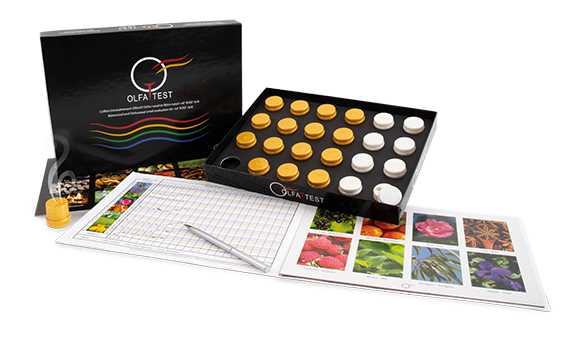
A preventative Use
Our products can also be used as a preventive measure to help an individual avoid any potential symptoms of anosmia. Thanks to a daily olfactive test with a few capsules, a sudden loss of smell must immediately alert the person concerned and invite him to take a PCR test, isolate himself as soon as possible, and make an appointment with his general practitioner or ENT. More generally, Olfatest can also be used for post-traumatic anosmias, or simply to maintain olfactory acuity. In case of decreased olfactory perceptions, it is advisable to consult your doctor, as it can reveal other pathologies.
A 100% French design and manufacture
Designed by a perfumer specializing in sensory education, Véronique Debroise, the product has a selection of odors that are very easily identifiable and named. They represent distinct olfactory families to cover a maximum of aromatic molecules that can be perceived by both the olfactory mucosa and the trigeminal nerve. These olfactive references are manufactured in the Sentosphere factory in the Yvelines, which has been the heart of the company for 30 years.
Learn more about smell
The 5 different types of loss of smell:
• Anosmia: loss of total, transient or odor-specific smell.
• Hyposmia: decrease in olfactory performance both at the level of the threshold of perception and in the confusion between odors.
• Ghosting is olfactory hallucinations without the presence of odorants.
• Hyperosmia is very rare and corresponds to people who are very sensitive to odors.
• Agueusia means that one has totally or partially lost the taste.
Mechanisms of smell
Humans perceive odors through the olfactory mucosa located at the top of the nasal cavity about 2 to 3 cm² per nostril. It is composed of four types of cells, including receptor cells that have extensions to the olfactory bulb.
These sensory cells have hairs at their ends with receptors that are bathed in mucus. This is where the odorous molecules arrive and the phenomenon of transduction takes place: the chemical characteristics of the odorous molecules are transformed into an electrical message intelligible by the central nervous system. There are between 350 to 400 different types of receptors, some of which may be sensitive to only one molecule, others to several. The combination of the number of molecules with chemical characteristics that can sensitize sensory cells and the number of receptors means that an individual can perceive billions of different olfactory sensations.
After passing through the olfactory bulb, the coding of a smell will happen in the limbic system (that of memory and emotions), the reward system (motivation, pleasure) and the cognitive system including language. A smell can thus be associated with a memory, then be transmitted to the center of language to eventually be identified and named. If the perception has been equated with an important moment in one's life, with a specific situation or clearly with a product (food, wine, plant, perfume, medicine), it will be easy to name it. But it is possible that we have not paid attention to certain smells, even if we have already smelled them. A smell must have left a strong imprint to be able to give it a name. Thus, some people think they do not have a sense of smell because they simply cannot give a name to a smell, while having perceived the sensation well.
Orthonasal olfaction and retronasal olfaction
When we smell, the molecules arrive directly on the olfactory mucosa, which is called the orthonasal pathway. When we eat, the odorous molecules arrive through the pharynx to the olfactory mucosa, which is called retronasal olfaction. Retronasal olfaction is a major component of "taste" since 80 to 90% of taste sensations are related to smell. In case of anosmia, we perceive only the sensations of sweet, salty, acidic, bitter and "umami" (taste of proteins), as well as those that bring the other senses.
In the case of Covid-19, it is the olfactory mucosa that would be damaged and, in particular, the supporting cells that secrete mucus.
Fortunately, this mucosa is constantly regenerating, but anosmia can last quite a long time in some individuals, as other cells could be affected.
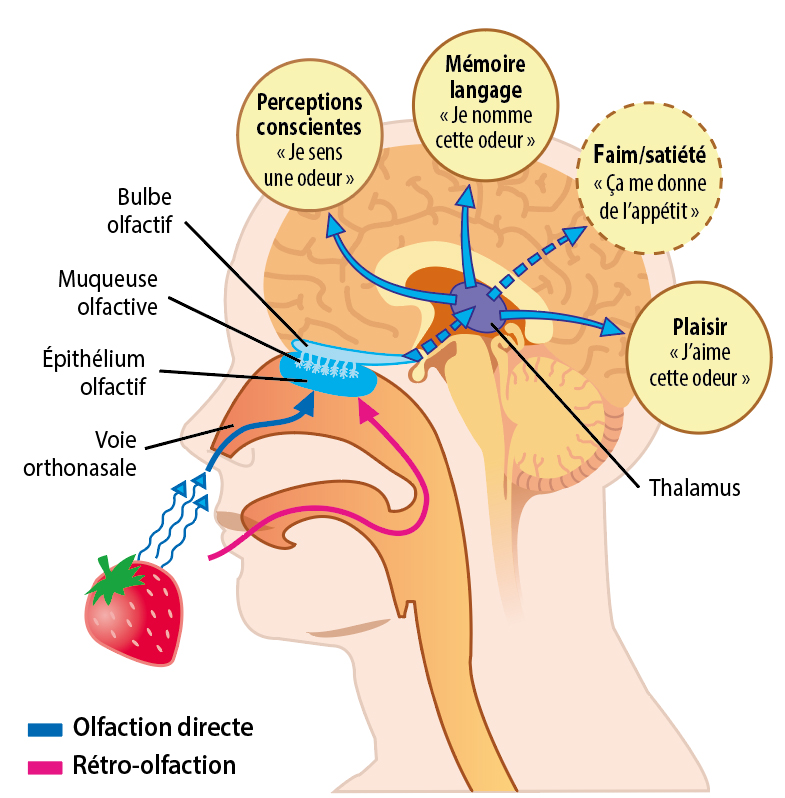
Trigeminal sensations
A number of sensations are associated with smell as they reach the brain through the trigeminal nerve. This nerve innervates the inner walls of the nose as well as the cornea and mouth. It is through this nerve that we perceive sensations such as the spiciness (pepper, radish ...), the burning (chilli, ginger, curry ...), the freshness (mint), the sparkling (soft drinks),the irritating nature of the onion that makes us cry or the aggressive side of ammonia ... Some odors can play a role on both the olfactory nerve and the trigeminal nerve (eucalyptol, menthol, camphor ...).
-
€45.00
-
€34.00
-
€33.00


